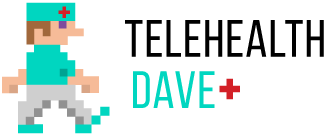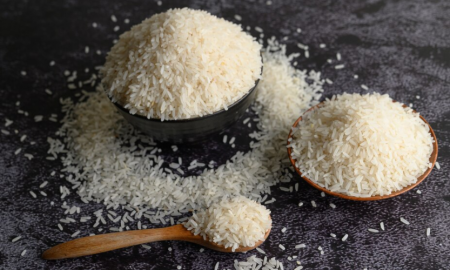
It’s TIME to Break Your Bad Habits and Form Healthy Ones in Your 20’s

20’s can be some of the most tumultuous years of your life where you’re still in the process of soul-searching and finding your life’s true purpose. While this decade is great for trying new things and having abandoned fun, some of the good habits that you adopt now will lay a foundation for a better future once you’re old and the youthful years are behind you.
Observe Your Current Routine

By asking the right questions and knowing how to properly observe your daily routine, you can adopt healthy habits more easy
Ask yourself this: what was the first thing you did after waking up this morning? Did you reach for your smartphone and checked social media, shower and get to work or eat breakfast? What did you have for breakfast?
Was it something hearty like eggs and toast or something quick and easy like a donut? What about lunch? Did you bring your own food or grabbed something from the fast food chain right across your office? Did you exercise after finishing work or went straight home and spent the rest of the evening watching TV?
Why It’s Important to Form Healthy Habits in Your 20’s
You’re probably thinking that the choices you make every day are the result of a well-thought-out plan, but in reality, these aren’t really conscious decisions. They are habits which you will carry with you into your 30’s and probably 40’s too. These habits, as insignificant as they may be on their own, have an aggregate effect on your health and will determine how you age over time.
Experts think that 20’s are the most opportune years of one’s life where many great habits are up for grabs for a healthier future. The pattern of choices you make during these years will not only affect your physical and mental health, but will also set you up for financial and professional success for the decades ahead.
Habits define almost every aspect of our lives, from relationships to health to productivity – as hard it is to build healthy habits, it’s even harder to break them.

It’s not impossible to break a bad habit if you’re willing to
Understanding the Habit Loop
The scientific advancements in the fields of neurology and psychology have made it easier for us to understand why habits form and how we can break bad habits over time to replace them with good ones. It all comes down to the most fundamental of neurological processes called a habit loop which consists of a cue, a routine and a reward.
A cue is often the trigger that tells our brain to engage in a certain habit and the reward is the emotion the action evokes, such as happiness, thrill or pleasure. If our habit is reaching into the cookie jar several times a day, then the cue that might trigger the behavior could be as simple as boredom or stress, and the reward being the pleasure we get from eating the sugary cookie.
Breaking the Habit

The first step towards breaking a bad habit is to identify the reward and cues
Step 1: Identifying the Reward
The act of eating the cookie develops into a routine over time once the brain starts craving the reward. For the brain, a habit is a habit, whether a good or a bad one. Hence, it’s as hard to break bad habits as it is to break the good ones. But with a conscious effort, we can re-design bad habits by identifying the reward and the cue that trigger a certain behavior.
If eating a cookie every day is making us put on weight, then this habit can easily be broken by determining what emotional cues cause our brain to crave the cookie. Once we’ve identified the motivation for the reward, we can easily find another activity that gives the same pleasure as eating a cookie. Distraction often helps with cravings; it’s good to go outside for a walk or read a book whenever these craving episodes take place.
Step 2: Identify Cues
Next, we want to focus on the cue that turns on the habit loop. The reason why some habits are harder to abandon than others is because there can be more than one cue than trigger the behavior. For example, if we’re craving the cookie often, it could have to do with a host of environmental factors such as the time of the day, the people we’re with, or the place we’re in.
Internal factors such as our emotional state could also play a hand in bringing about a certain behavior. To identity the cues every time we crave a certain reward, we should observe the environment around and our internal state of emotions for a few days and find any recurring patterns that could be prompting the craving.
Step 3: Have a Plan
Once we’ve identified the cue and the reward for a certain habit, we should iron out a strategy to modify our behavior. If we are able to distract ourselves from the urge of eating a cookie by checking our phone, we can develop a new routine by engaging with a friend on social media every time we feel the craving setting in. Changing an old habit takes time, but by committing to a plan and working on it every day, we will eventually achieve success.
The same method can be applied to building new habits as well. If we really want to start exercising every day, then we need a specific cue which triggers the behavior – such as keeping our sneakers next to the breakfast table or calling up a friend who goes to the same gym as we do.
Maybe we want to lose weight or look a certain way before summer, or we love the endorphin rush we get after a morning workout which lifts our mood and keeps us energized throughout the day. Some people even like to reward themselves with a good meal or a piece of chocolate after a workout which serves as a motivation to get into the healthy habit.
More in Motivation
-
`
6 of the Richest Female Rappers in the World
Who is the richest female rapper in 2024? Well, the hip-hop world has seen a surge in powerful female voices who...
July 29, 2024 -
`
Does Insurance Cover Physical Therapy?
When it comes to physical therapy, a common question arises: Do you use health insurance for physical therapy? Well, navigating the...
July 25, 2024 -
`
Does Coughing Work Your Abs? Here’s All You Ought to Know
When it comes to unexpected ways to engage your core, you might find yourself asking: Does coughing work your abs? The...
July 19, 2024 -
`
How to Prepare Rice Water for Weight Loss – Benefits and Uses
Rice water isn’t just a staple in traditional remedies—it’s a powerhouse of benefits for health and beauty. From treating diarrhea to...
July 12, 2024 -
`
Amanda Bynes Pregnant at 13? Debunking the Rumors
In recent years, the internet has been ablaze with rumors surrounding former child star Amanda Bynes, particularly regarding allegations of a...
July 1, 2024 -
`
Can Baking Soda Clean Your Lungs?
Years of inhaling cigarette smoke, pollution, and other toxins can leave you longing for a way to cleanse your lungs. The...
June 27, 2024 -
`
How to Build Muscle Mass After 60? 5 Proven Strategies
Curious about how to build muscle mass after 60? You are not alone. And the good news is that it is...
June 20, 2024 -
`
Prediabetic Foods That Can Lower Your Blood Sugar in 2024
Prediabetes is a health condition characterized by blood sugar levels that are higher than normal but not high enough to be...
June 13, 2024 -
`
Kelly Clarkson’s Weight Loss Journey | Here Are the Details
Kelly Clarkson’s weight loss has been a hot topic among fans and media alike. The iconic American singer and host of...
June 3, 2024















You must be logged in to post a comment Login